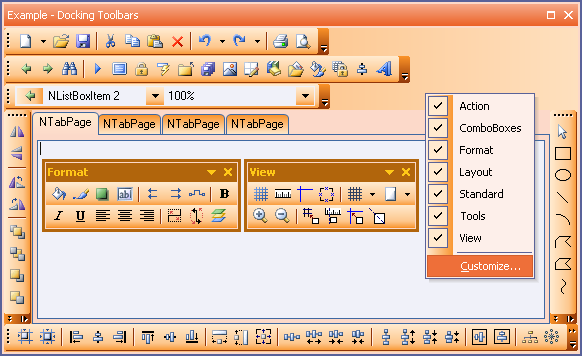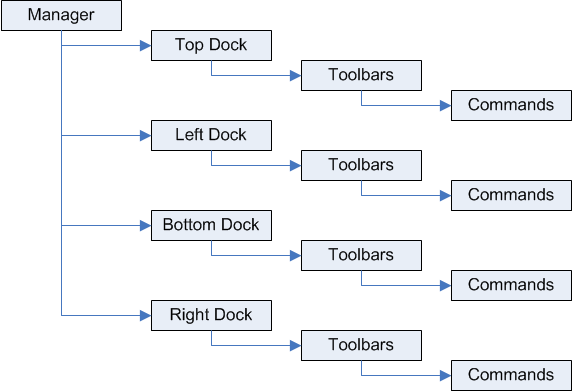Following are the features provided by the docking framework:
-
Complete control over each aspect of the visual representation.
-
Advanced visual editor available in both design and run time.
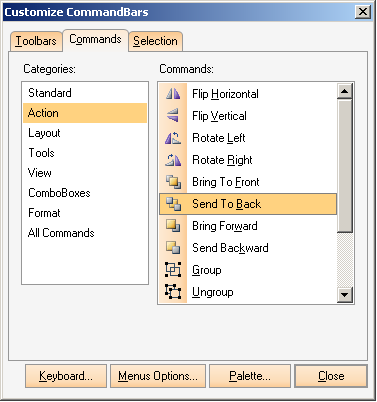
By using the visual editor you can customize the entire framework's structure. It completely supports drag-and-drop operations.
For more information about using the editor see Using The Advanced Visual Editor.
-
Intuitive dock/undock/redock capabilities - both programmatically and visually.

Floating toolbar displaying commands in a single row.
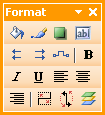
Floating toolbar displaying commands in 4 rows.
-
Command overflow support - when a dock's size is reduced it resizes its children toolbars automatically and some commands may become not visible. Such commands are put in the special "Pendant" command at the end of the toolbar.

The pendant command on the right side indicates that is contains hidden commands.
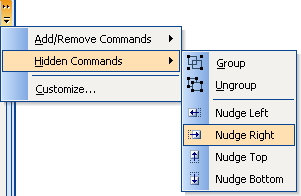
All invisible commands are added to the "Hidden Commands" section.
-
Permissions - specify what user can do with each toolbar - AllowHide, AllowRename , AllowDelete, CanDockLeft, CanDockRight, etc.
-
Complete persistency - the entire state of the framework can be persisted and then restored.

